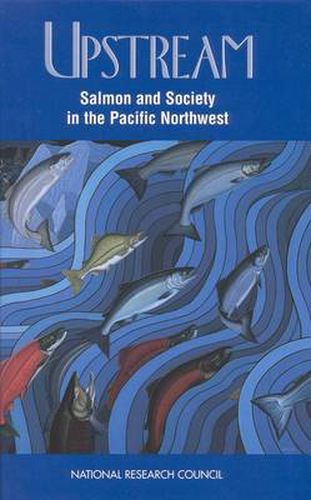Readings Newsletter
Become a Readings Member to make your shopping experience even easier.
Sign in or sign up for free!
You’re not far away from qualifying for FREE standard shipping within Australia
You’ve qualified for FREE standard shipping within Australia
The cart is loading…






The importance of salmon to the Pacific Northwest?economic, recreational, symbolic?is enormous. Generations ago, salmon were abundant from central California through Idaho, Oregon, and Washington to British Columbia and Alaska. Now they have disappeared from about 40 percent of their historical range. The decline in salmon numbers has been lamented for at least 100 years, but the issue has become more widespread and acute recently.
The Endangered Species Act has been invoked, federal laws have been passed, and lawsuits have been filed. More than $1 billion has been spent to improve salmon runs?and still the populations decline.
In this new volume a committee with diverse expertise explores the complications and conflicts surrounding the salmon problem?starting with available data on the status of salmon populations and an illustrative case study from Washington state’s Willapa Bay.
The book offers specific recommendations for salmon rehabilitation that take into account the key role played by genetic variability in salmon survival and the urgent need for habitat protection and management of fishing.
The committee presents a comprehensive discussion of the salmon problem, with a wealth of informative graphs and charts and the right amount of historical perspective to clarify today’s issues, including:
Salmon biology and geography?their life’s journey from fresh waters to the sea and back again to spawn, and their interaction with ecosystems along the way. The impacts of human activities?grazing, damming, timber, agriculture, and population and economic growth. Included is a case study of Washington state’s Elwha River dam removal project. Values, attitudes, and the conflicting desires for short-term economic gain and long-term environmental health. The committee traces the roots of the salmon problem to the extractive philosophy characterizing management of land and water in the West. The impact of hatcheries, which were introduced to build fish stocks but which have actually harmed the genetic variability that wild stocks need to survive.
This book offers something for everyone with an interest in the salmon issue?policymakers and regulators in the United States and Canada; environmental scientists; environmental advocates; natural resource managers; commercial, tribal, and recreational fishers; and concerned residents of the Pacific Northwest.
$9.00 standard shipping within Australia
FREE standard shipping within Australia for orders over $100.00
Express & International shipping calculated at checkout
The importance of salmon to the Pacific Northwest?economic, recreational, symbolic?is enormous. Generations ago, salmon were abundant from central California through Idaho, Oregon, and Washington to British Columbia and Alaska. Now they have disappeared from about 40 percent of their historical range. The decline in salmon numbers has been lamented for at least 100 years, but the issue has become more widespread and acute recently.
The Endangered Species Act has been invoked, federal laws have been passed, and lawsuits have been filed. More than $1 billion has been spent to improve salmon runs?and still the populations decline.
In this new volume a committee with diverse expertise explores the complications and conflicts surrounding the salmon problem?starting with available data on the status of salmon populations and an illustrative case study from Washington state’s Willapa Bay.
The book offers specific recommendations for salmon rehabilitation that take into account the key role played by genetic variability in salmon survival and the urgent need for habitat protection and management of fishing.
The committee presents a comprehensive discussion of the salmon problem, with a wealth of informative graphs and charts and the right amount of historical perspective to clarify today’s issues, including:
Salmon biology and geography?their life’s journey from fresh waters to the sea and back again to spawn, and their interaction with ecosystems along the way. The impacts of human activities?grazing, damming, timber, agriculture, and population and economic growth. Included is a case study of Washington state’s Elwha River dam removal project. Values, attitudes, and the conflicting desires for short-term economic gain and long-term environmental health. The committee traces the roots of the salmon problem to the extractive philosophy characterizing management of land and water in the West. The impact of hatcheries, which were introduced to build fish stocks but which have actually harmed the genetic variability that wild stocks need to survive.
This book offers something for everyone with an interest in the salmon issue?policymakers and regulators in the United States and Canada; environmental scientists; environmental advocates; natural resource managers; commercial, tribal, and recreational fishers; and concerned residents of the Pacific Northwest.